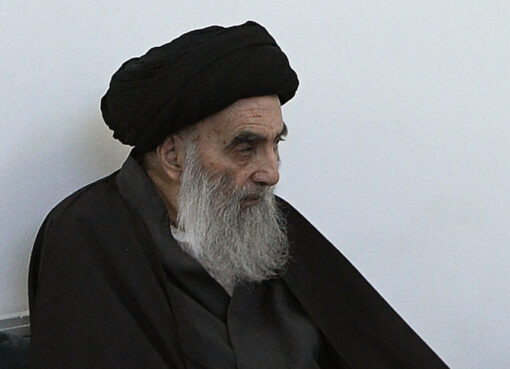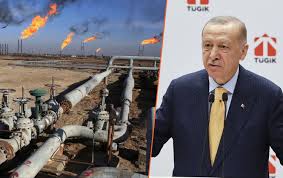Higher oil prices, by softening budget constraints for energy producers in the Middle East and North Africa, may reduce the incentive for major economic reforms. But the region’s oil importers, facing renewed risks to social and political stability from rising costs, must contend with much greater challenges.
LONDON – The soaring commodity prices affecting developing countries have produced both winners and losers in the Middle East and North Africa (MENA). The region’s resource-rich states, which are among the world’s biggest oil and gas exporters, are experiencing revenue windfalls. But for oil importers such as Egypt, Jordan, Lebanon, Morocco, and Tunisia, higher energy prices have stretched national budgets to the limit and increased current-account deficits.
MENA is of course no stranger to the vicissitudes of global oil markets. But the region has been exposed to a succession of shocks in the past few years, including the mass protests in Algeria, Iraq, and Lebanon in 2019, Saudi-Qatari geopolitical tensions, the COVID-19 pandemic, and now the further surge in oil and food prices triggered by Russia’s invasion of Ukraine.
In the Middle East, oil and wheat shape both the economic and political fortunes of states. Governments provide citizens with generous welfare entitlements, including public-sector jobs and subsidized fuel and food. These distributional commitments ultimately form part of an authoritarian bargain whereby rulers deliver social welfare in exchange for citizens’ quiescence, if not support. Fuel and food subsidies are at the heart of this social contract, which is funded through externally generated incomes such as oil revenues, aid, and remittances.
Back to Fiscal Health
For the region’s oil exporters, rising oil prices mean a revival of revenues after an almost decade-long slump. After oil prices collapsed in 2014, most MENA oil producers had difficulty balancing their budgets since oil prices were below the minimum level needed to do so. Even the richest Gulf Cooperation Council (GCC) states had to cut corners, control spending, and draw down their savings. With oil prices increasing by more than 50% since March 2021, such fiscal troubles have abated, and huge cash windfalls have helped to replenish reserves.
Rising oil prices have had the most decisive effect on MENA’s struggling oil economies, such as Algeria and Iraq. Until recently, oil revenues in both countries were increasingly insufficient to meet their respective governments’ distributive commitments to young and growing populations. To confront its fiscal challenges, Algeria had to use the financial reserves it had built up during the previous oil boom from 2008 to 2014. After the country’s foreign-exchange reserves fell from $122 billion in 2016 to $42 billion in early 2021, the regime was fast running out of options. But the Ukraine war radically changed the outlook. With billions of dollars of hydrocarbon revenues pouring in, Algeria’s powerful and opaque oligarchy has obtained a new lease on life.
Iraq has benefited from a similar reversal of fortunes. In 2020, the pandemic and falling oil prices halved national income. Despite being the world’s fifth-largest oil exporter, it was struggling to pay government employees’ salaries. But the global surge in oil prices enabled Iraq to rake in $62 billion in revenues in the first six months of 2022, its highest monthly average since 1972. Rampant corruption, dilapidated infrastructure, and fractious politics mean that Iraq clearly is not out of the woods yet. But the positive terms-of-trade shock resulting from higher oil prices has pulled the country back from an economic precipice.
Back in 2019, popular protest movements in Algeria and Iraq mobilized large numbers of people, most of them young, who had lost faith in their leaders. The protests had begun to shake up both countries’ regimes but then subsided, initially because of the pandemic and then following the revival of oil revenues.
For now, at least, Algeria and Iraq have been able to stabilize food prices and channel resources into youth employment-support programs. The uptick in global oil prices has also replenished government budgets in countries such as Oman and Bahrain, whose public finances are more precarious, because their oil exports pale in comparison to those of leading GCC producers.
Feeling the Commodity-Price Squeeze
While buoyant oil prices are a boon for oil exporters, they are a bane for resource-poor MENA countries that have more limited financial means but still need to subsidize fuel and food for political reasons. MENA countries’ spending on such subsidies exceeds the developing-country average, and half of global energy subsidies are distributed in the Middle East. Higher oil prices are making it increasingly difficult for the region’s oil-importing countries to maintain pre-existing subsidy levels. Together with accelerating inflation and food shortages, this is a combustible mix.
The MENA region is one of the most dependent on food imports, with Egypt standing out as the world’s largest wheat importer. MENA states lacking substantial oil incomes are struggling to contain the price of essential food items, especially wheat – the price of which has long influenced the political temperature of the Arab street.
How these struggling economies cope with global commodity shocks says much about their underlying political economy. Authoritarian stability in resource-poor but strategically important economies such as Egypt and Jordan is predicated on support from richer Gulf neighbors who effectively underwrite these states’ social contracts.
The nature of such regional support has changed from blanket cash aid to joint investments and deposits in central banks. For example, the $3 billion Saudi Jordanian Investment Fund was established in 2017 (and activated more recently). While the fund aims to support investment projects in Jordan, the associated financial inflows will help to shore up the country’s foreign reserves. In April 2022, Saudi Arabia transferred $50 million to Jordan as part of a larger $2.5 billion aid package from the Kingdom, the United Arab Emirates, and Kuwait.
Egypt, which has significantly larger external financing needs, provides an even more revealing example. Without support from its rich Gulf neighbors, the country would struggle to meet its import requirements for wheat and oil. Soon after the economic impact of Russia’s invasion of Ukraine began to hit Egypt, President Abdel Fattah el-Sisi dashed off to the UAE and Saudi Arabia, where he received renewed commitments of financial support.
Egypt already has about $22 billion in commitments for investments and central-bank deposits from Saudi Arabia, Qatar, and the UAE. To relieve the immediate pressure on financing wheat imports, the Saudi-based International Islamic Trade Finance Corporation has doubled its credit limit to Egypt from $3 billion to $6 billion. Such regional support mechanisms demonstrate the importance that rich GCC states accord to political stability in MENA countries, since any instability in neighboring states has the potential to spill over.
The war in Ukraine and the ensuing commodity shocks have increased oil-rich MENA states’ geopolitical leverage. As energy security becomes a paramount concern in Europe and the United States, leading Middle East producers have gained new relevance in the global order. This is true not only of rich GCC states like Saudi Arabia and Qatar but also of Algeria, which supplies Europe with 11% of its natural-gas imports. As oil windfalls accumulate, the region’s sovereign wealth funds are building up their reserves and investment portfolios, and many of them are currently on a global spending spree.
Skeptics argue that higher oil prices, by softening MENA energy producers’ budget constraints, can reduce the incentive for major economic reforms. But the region’s oil importers, facing renewed risks to social and political stability, must contend with much greater challenges.
(*) Adeel Malik is Associate Professor of Development Economics and Globe Fellow in the Economies of Muslim Societies at the University of Oxford.
Source: Project Syndicat, 12. September 2022








Comment here